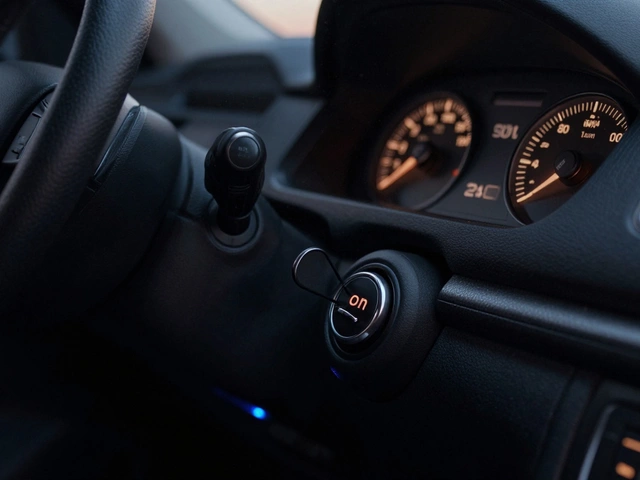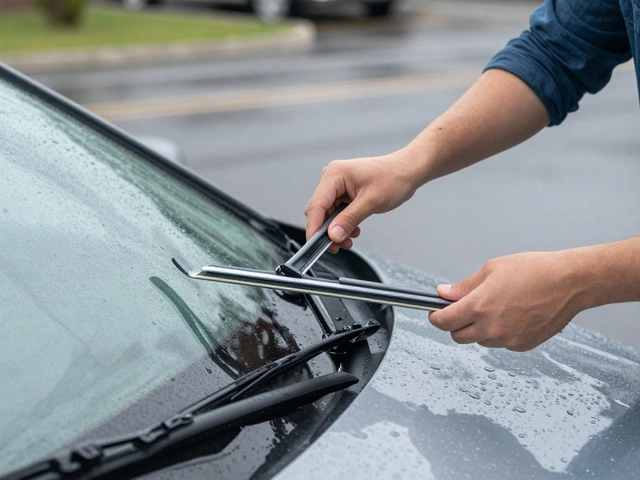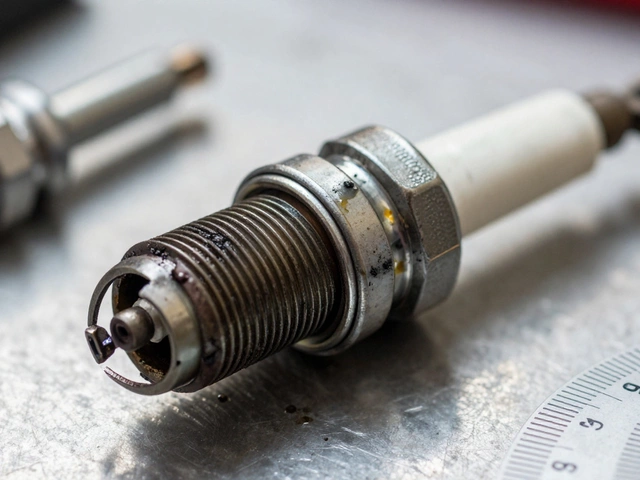So, you’re about to add oil to your engine, and the million-dollar question hits you: should the engine be running or not? Spoiler alert—it shouldn't! Adding oil while the engine's running isn’t just unnecessary, it can actually lead to messy spills and even pose safety risks.
Why, you ask? Well, a running engine gets hot—really hot! If you’re adding oil, it’s best to do it when things are cool and settled. This not only makes the job safer but also ensures that you’re getting an accurate oil level reading. Adding oil with the car turned off and on a level surface is kind of the golden rule here.
Next time you're under the hood, remember to let your car chill a bit before unscrewing that oil cap. Trust me, your hands—and your engine—will thank you. Plus, you’ll avoid the classic newbie mistake of overfilling, which can be as harmful as running low.
- The Right Time to Check and Add Oil
- Why Your Engine Should Be Off
- Common Mistakes When Adding Oil
- Tips to Keep Your Engine Healthy
The Right Time to Check and Add Oil
Checking and adding engine oil isn't just something you do when your car throws a tantrum with that annoying oil light. No, you should make this a regular habit. But when exactly should you check and add oil to keep your car purring smoothly?
Here’s the deal: the best time to check oil levels is usually after the engine has been off for a few minutes, on a level surface. This helps the oil settle in the pan, giving you an accurate reading. Ideally, check it early in the morning if the car hasn’t run for hours, or after waiting at least five minutes post-driving.
"Checking your engine oil when it's cold gives the most accurate reading, as the oil will have settled and fully drained into the oil pan." – Automotive Expert Jane Doe
When it comes to adding oil, make sure the engine is off and cool. Adding oil when things are hot isn’t just risky—it can mess with your readings, leading to different levels shown on the dipstick.
- Park your car on a level surface.
- Turn off the engine and wait a few minutes if it was running.
- Check oil levels using the dipstick. Wipe it clean first, reinsert it, and then pull it out for the true reading.
- Add oil in small amounts, rechecking levels to avoid overfilling.
Fun fact—most mechanics recommend checking your oil once a month or every time you fill up the tank. Keeping a watchful eye helps catch potential issues early, saving you from costly repairs down the road.
Why Your Engine Should Be Off
Turning off your engine before adding oil isn’t just a good idea; it’s essential. Imagine trying to pour oil into a scorching hot engine. It's like attempting to fry an egg on a griddle without a spatula—risky and messy. Your car's engine can reach temperatures over 200 degrees Fahrenheit. Not exactly finger-friendly, right?
For starters, when the engine is off, the moving parts are at rest. This means no oil is circulating, allowing it to settle back into the oil pan. This gives you the most accurate gauge of how much oil your engine actually needs—more important than you might think. Overfilling can create high pressure, leading to oil leaks or seals bursting, which is a major headache.
A running engine can also introduce safety risks. Let's face it, a quiet, parked car is much safer to work with—no risk of getting entangled with moving parts. Plus, adding oil to a hot engine can cause oil vapors to fume up, which is more than annoying and can be hazardous in confined spaces.
In short, keeping the engine off while adding oil is simply good practice. It keeps things safe, accurate, and hassle-free. Next time you pop that hood, give your car a minute to cool down first. It’s the small things like this that keep your ride smooth and trouble-free.

Common Mistakes When Adding Oil
Let’s face it, we've all made silly mistakes when doing car maintenance, especially when it comes to adding oil. Here are some common goofs people often make. Avoiding these can save you a lot of headaches down the road.
First up, checking oil levels on a slope or after a long drive. Always go for a flat surface and give your car a few minutes to sit idle. Hot oil expands, and you'll end up thinking you've got more than you actually do. Make sure you’re on level ground with the engine off for the most accurate measure.
Then there's the classic overfilling blunder. More isn't better when it comes to engine oil. Too much oil can foam up and cause the engine to overheat or even damage seals and gaskets. Pour slowly and check frequently to avoid making this mistake.
Another common pitfall is using the wrong type of oil. Cars aren’t one-size-fits-all when it comes to oil. Check your owner’s manual for the right viscosity grade. The wrong oil can lead to poor lubrication, increased friction, and lower fuel efficiency.
Let's not forget about the infamous missing cap. You’re in a rush, and after adding oil, you forget to put the cap back on. This can lead to oil spraying all over your engine, causing a smoky mess and potential fire hazard. Always double-check that it’s securely tightened before closing the hood.
| Common Mistake | Impact |
|---|---|
| Checking oil on a slope | Inaccurate oil level reading |
| Overfilling oil | Engine overheating |
| Wrong oil type | Poor engine performance |
| Forgetting the oil cap | Oil spillage, potential fire risk |
By steering clear of these common mishaps, you’ll keep your car running smoothly and avoid costly repairs. It's all about taking your time and using the right methods, ensuring your engine oil changes go without a hitch.
Tips to Keep Your Engine Healthy
Keeping your engine healthy doesn’t need to be a mystery or a chore. Just a few simple habits will do wonders for the life of your vehicle. First off, regular oil checks are a must. Typically, you should inspect the oil level every few weeks or before long trips. This is your way of saying, “I care about you, car.”
And while we’re on it—use the right engine oil. Consult your manual or a reliable mechanic to make sure you're not pouring the wrong liquid gold into your motor. Remember, not all oils are created equal, and choosing the wrong one can actually harm your engine.
- Timely Oil Changes: Stick to the manufacturer's recommended schedule for oil changes, which is usually every 3,000 to 5,000 miles. Fresh oil keeps those engine parts moving smoothly.
- Keep It Cool: Check your coolant regularly. Overheating can be a silent killer for engines. A simple glance at your coolant levels can prevent big-time trouble.
- Fuel Quality Matters: Always use good-quality fuel from reputable stations. Contaminated or low-quality fuel can gum up the works.
- Listen Up: Pay attention to strange noises from the engine. Clicking, knocking, or snapping sounds? It's your engine trying to tell you something. Get it checked out pronto.
- Filter Care: Regularly change your air and oil filters. A blocked air filter restricts airflow, reducing efficiency and weakening performance.
Last but not least, don’t forget the visual check. Look under the car for leaks or stains on your driveway, which could be a red flag. These stain detectives are often undervalued but are pretty much your vehicle’s version of a cry for help.
By keeping these tips in mind, you’re not just extending the life of your car, but also making sure every drive is smooth and enjoyable. Keep your engine happy, and it’ll return the favor by running like a dream.








